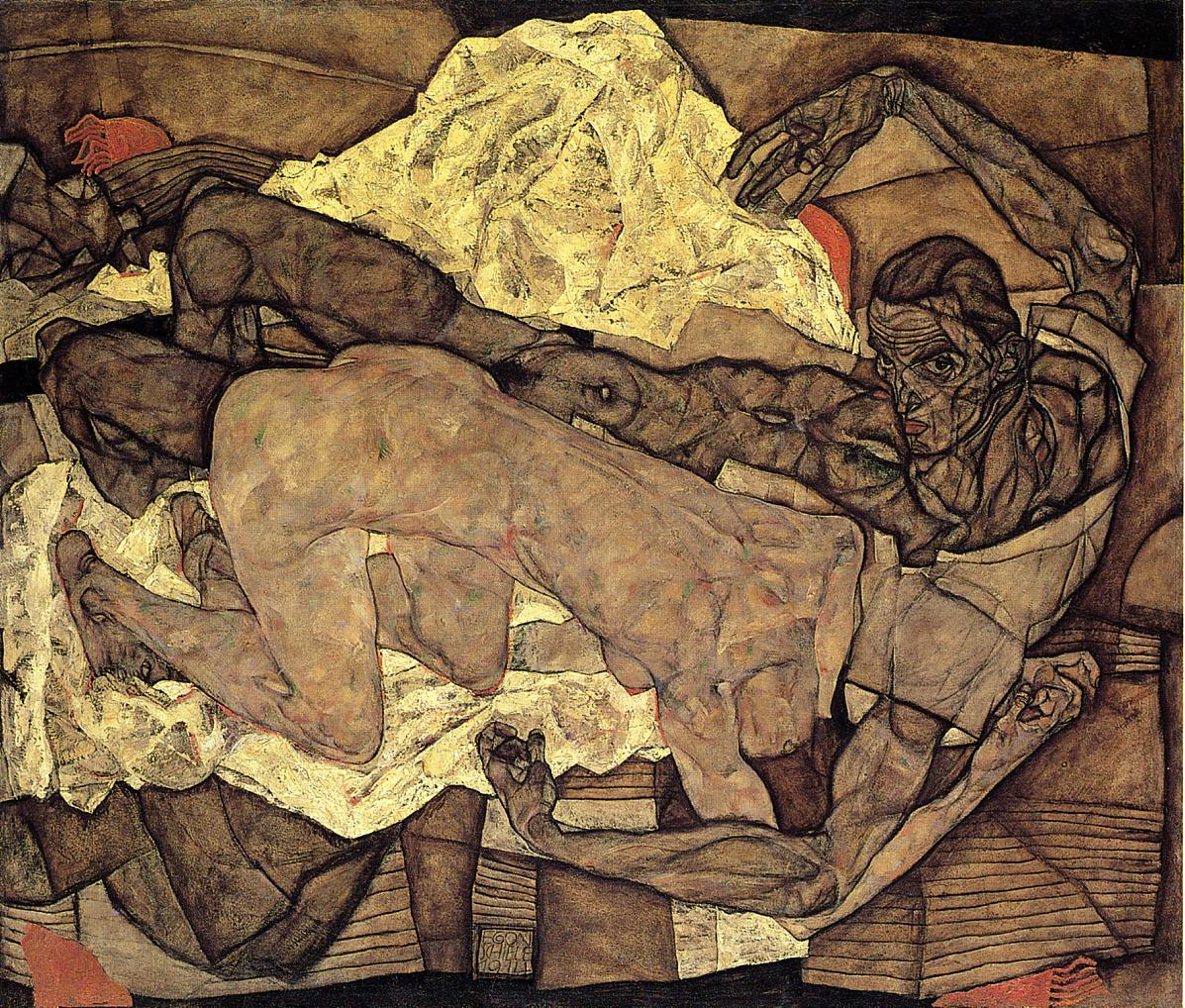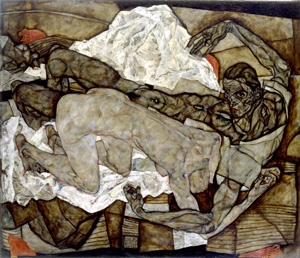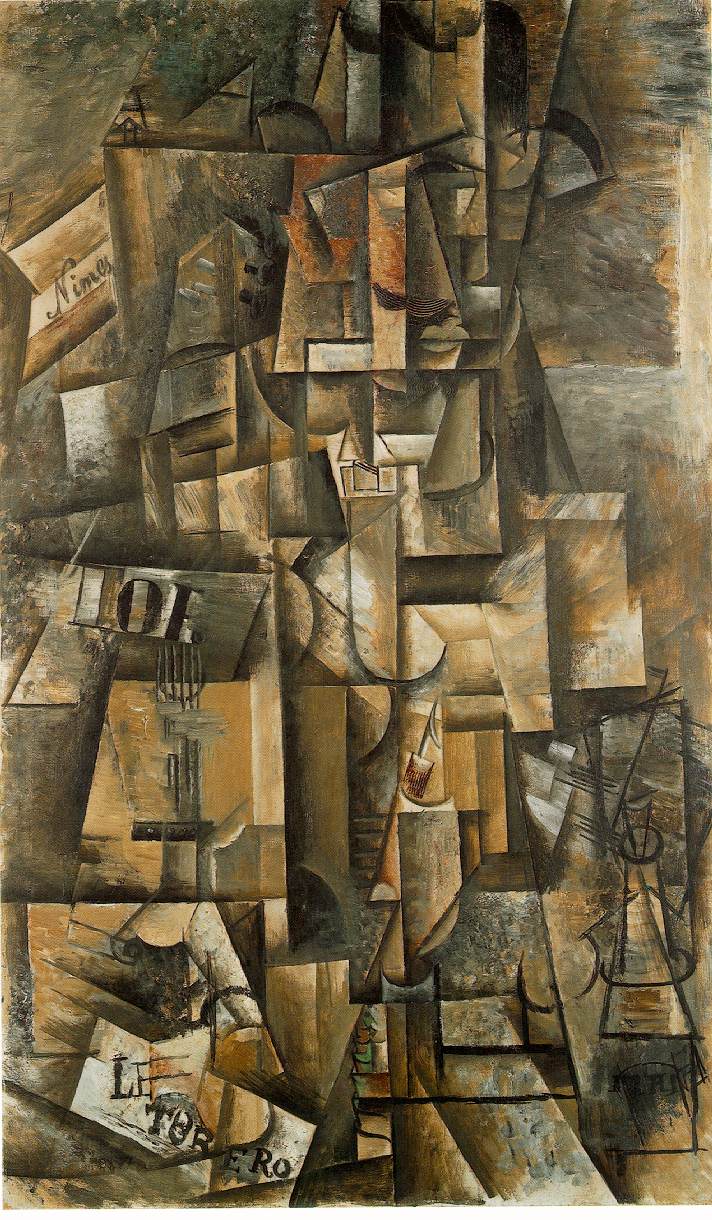
When visiting the Neue Galerie in NY, recently, for the Klimt Exhibition, I spent most of my time with Schiele’s Man and Woman I, a 1914 oil painting. This is my favorite piece in the Neue collection. You can lose yourself in the seamless movement, the gritty eroticism of what is so very Schiele. I find the supplicated woman particularly interesting. Her four point stance on elbows and knees. The man challenging the viewer. The form has something of a Cubist element but with a fluidity I never felt with Picasso‘s Cubist works. I prefer Picasso’s earlier pieces except for Aficionado. Aficionado is truly spectacular, intricate woven hues so that the brushwork presents a depth of perspective not seen in all of Picasso’s Cubism. I came to the painting after reading Hemingway’s The Sun Also Rises as a Humanities undergrad. Hemingway and Picasso go well together on many levels. I like the cross-sections of visual and textual. And I’d like to see more of it. I can’t help wonder who Schiele’s Hemingway is?



I’m embarrassed to say I didn’t really understand cubism until reading this Salon piece on Picasso’s Aficionado and Schiele’s Man and Woman I, even though Schiele’s work isn’t considered cubist. That’s when you know an artist is creating on a vulnerably honest level creating a raw connection with his audience … when he or she creates something that can only be understood from a multi-viewpoint and multi-media perspective. In these two particular cases, I could never have appreciated the work as much without first knowing and understanding on a cerebral level the intention behind the piece, i.e. to create art that captures the idea of multi-viewpoints on an honest level through fragmentation. From reading the following piece, which is a beautiful introduction for newbies like me, I’ve developed an appreciation for multi-viewpoint art, i.e. cubism.